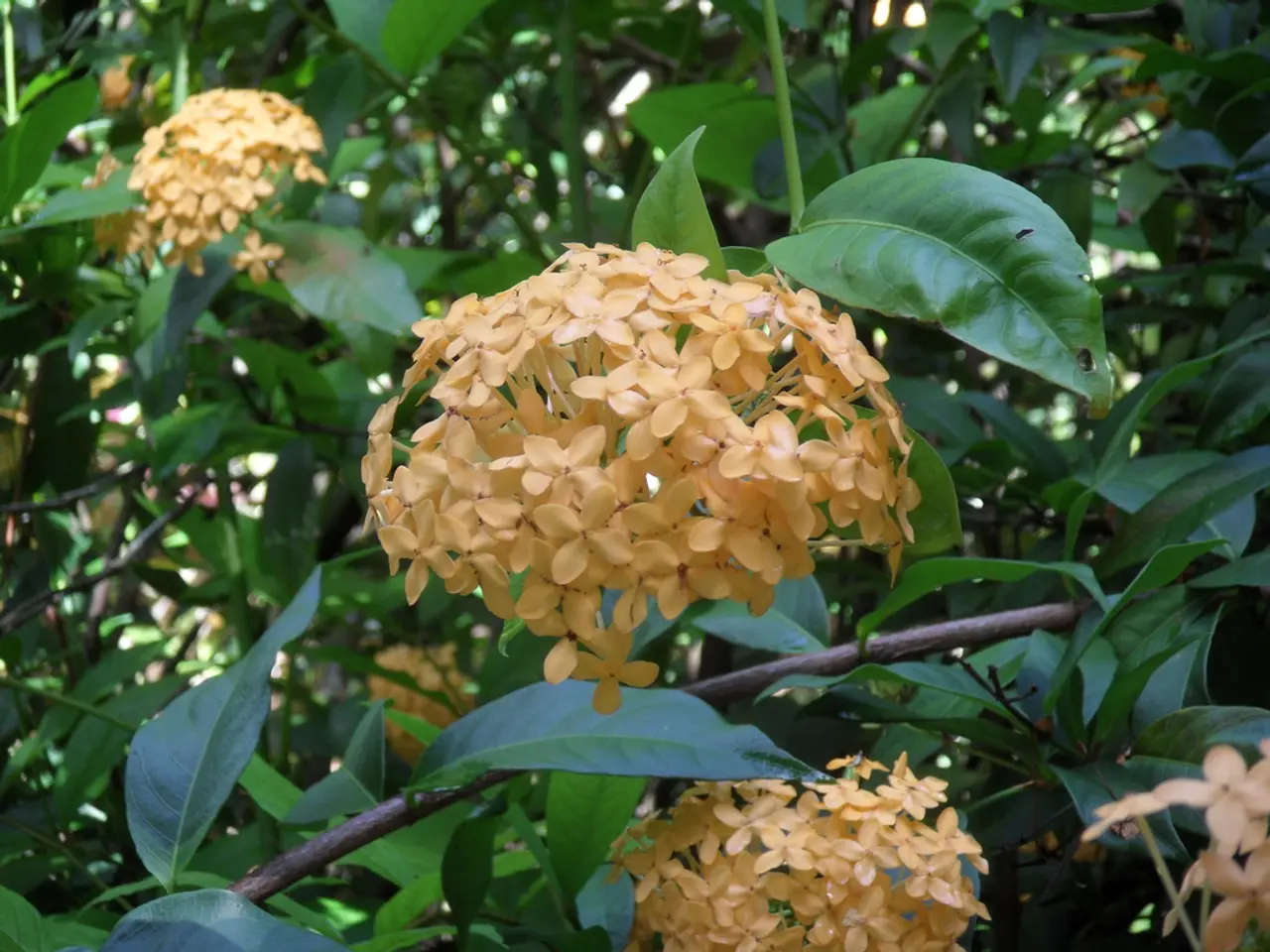Information on Tree Hydrangea: Insights on Cultivating Hydrangea Trees
Tree hydrangeas, specifically Hydrangea paniculata, are a popular choice for gardens due to their stunning flowers and upright growth habit. Here's a guide to help you care for these beautiful plants.
Growth and Appearance
Tree hydrangeas grow to heights between 10 feet (3 m.) and 25 feet (7.6 m.) tall, and widths up to 20 feet (6 m.). Their foliage is dark green and deciduous, growing up to 6 inches (15 cm.) long and 3 inches (7.5 cm.) wide. The blossoms of tree hydrangeas start as cream-colored flowers, but mature to green, light pink, or deep pink.
Pruning
The best time to prune a tree hydrangea is during late winter or early spring, before new growth begins. This helps maintain shape and encourages blooms. Pruning after flower bud formation in late summer should be avoided to prevent loss of next year’s flowers. Prune back no more than one third of the top growth per season as this will encourage strong stems to help support those ultra large blooms all summer long.
Watering and Soil
Hydrangeas prefer moist but well-drained soil. They have shallow roots and need deep, consistent watering, especially during hot, dry spells. Avoid soggy soil to prevent root rot. Tree hydrangeas will thrive in nutrient-rich, lightly moist soil that is not soggy.
Fertilizing
Use a slow-release, balanced fertilizer in early spring. A second application can be done in fall if shaping is done then. Avoid high nitrogen fertilizers that encourage leaf growth over blooms.
Mulching and Winter Protection
In colder climates, apply a thick layer of mulch around the base in late autumn to protect roots from freezing. For exposed locations, wrap the trunk with burlap to prevent frost damage and bark splitting.
Soil Considerations
Ensure soil is moist but drains well. If soil is heavy or poorly drained, consider raised beds or amending with organic matter. Acidic to neutral pH suits hydrangeas, with some species’ flower color affected by pH.
Adapting to Climate
In hotter climates, increase watering frequency and ensure some afternoon shade to prevent leaf scorch. In cold climates, prioritize winterizing with mulch and trunk protection. In humid climates, thinning out dense growth improves airflow and reduces fungal disease pressure.
Flowering and Maintenance
Tree hydrangeas bloom on new wood which means they form their flower buds on the current seasons growth. Over the summer, the shrubs will benefit from an application of compost as a top dressing. All hydrangea plants need irrigation in the summer, especially if they are planted in a full sun location.
The spectacular flowers of tree hydrangeas make up for the lack of fall color. Tree hydrangeas tolerate almost any type of soil, including acidic or alkaline, as long as it is well draining. The surface roots of tree hydrangeas are typically not a problem for planting near the foundation of a home.
In summary, pruning tree hydrangeas mainly involves late winter to early spring cutting of old flower heads and damaged wood, maintaining a balanced canopy for airflow, and careful watering and fertilizing suited to soil moisture and climate. Winter protection measures are critical in colder zones. These practices promote healthy growth and abundant flowering across different environments.
Read also:
- Understanding Prediabetes: A Precursory Condition to Diabetes
- Aerial attacks by Israel result in the death of 11 individuals in Gaza, occurring concurrently with Hamas leader's trip to Cairo.
- Expanding Human Milk Fortifier Industry Predicted to Reach USD 9.9 Billion by 2034
- Awards for advancements in community health initiatives announced for the first time




